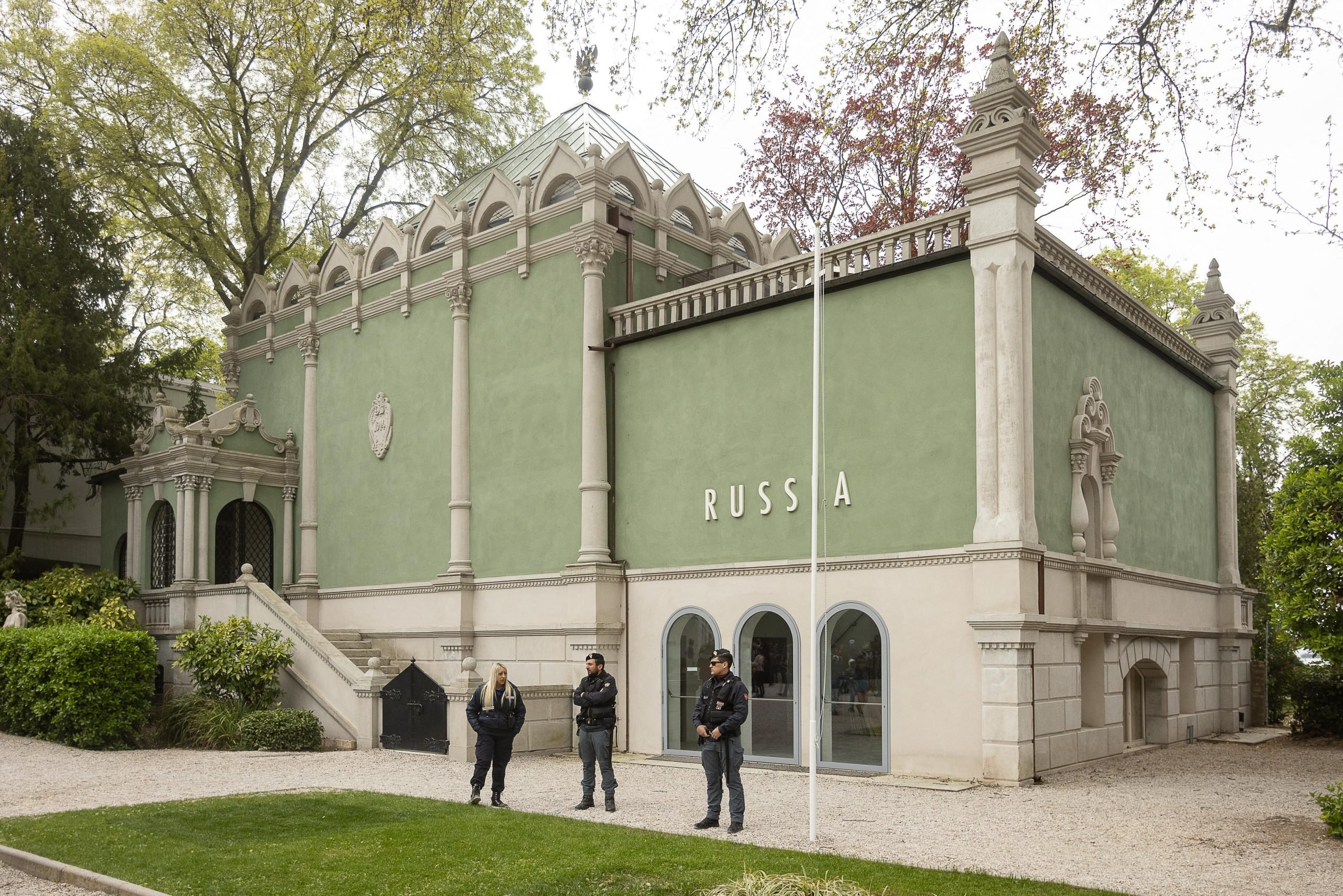
Russia will not participate in the Venice Biennale for the second edition in a row since the country launched its attack on Ukraine in Februrary 2022.
This year’s 60th Venice Biennale will have 90 national pavilions, which includes Ukraine’s entry “Net Making,” a presentation of work by the photographers and video artists Katya Buchatska, Daniil Revkovskyi, Andrii Dostliev, Lia Dostlieva, and Andrii Rachynskyi, and architect Oleksandr Burlaka. It will be curated by Viktoria Bavykina and Max Gorbatskyi.
Ukraine does not have a permanent pavilion building but this exhibition will be held in Venice’s Arsenale.
In addition, a video installation by the Ukrainian art collective Open Group will be presented by Poland after the country decided to make an eleventh-hour changes to its exhibition for political reasons.
Russia has been a regular participant in the Venice Biennale, having established a pavilion in 1914. However, its exhibition for the 59th edition in 2022 was cancelled on February 27 of that year, just days after Russia invaded Ukraine. The artists Alexandra Sukhareva and Kirill Savchenkov, and the curator, Raimundas Malašauskas, announced their resignation on social media.
“There is nothing left to say, there is no place for art when civilians are dying under the fire of missiles,” wrote Savchenkov. “As a Russian-born, I won’t be presenting my work at Venice.”
On March 2, 2022, La Biennale pledged to support Ukraine’s national pavilion, which had temporarily been forced to cease preparations after Russia’s invasion. An updated version of artist Pavlo Makov’s 1995 sculpture Fountain of Exhaustion was presented thanks to the efforts of curator Maria Lanko.
Additionally, another temporary “pavilion” known as Piazza Ucraina was erected by the Biennale close to Russia’s closed pavilion. This last minute tribute to the besieged nation included a wooden structure that appeared to have been scorched by flames.
The Russian pavilion also remained closed for the 18th Biennale Architettura last year, while Ukraine participated for the first time since 2014.
Representatives from the Venice Biennale said they were notified that Russia would not participate this year by the Russian Federation’s Minister of Culture. “It’s important to emphasize that, according to the procedures, the decision to participate or not lies with the countries, not with La Biennale di Venezia,” a spokesperson also noted.
Political strife has regularly affected national presentations at the Venice Biennale although, notably, Israel will go ahead with its pavilion this year despite its continued military conflict with Palestine. Artist Ruth Patir, whose exhibition is being organized by curators Mira Lapidot and Tamar Margalit, will represent the country.
The Palestine Museum U.S., which presented a collateral event at the 2022 Venice Biennale, submitted a proposal for the this year’s biennial, but was rejected. The proposed exhibition, “Foreigners in Their Homeland,” featuring contemporary Palestinian art, will now go ahead as an unofficial collateral event at Venice’s Palazzo Mora instead, opening April 20.